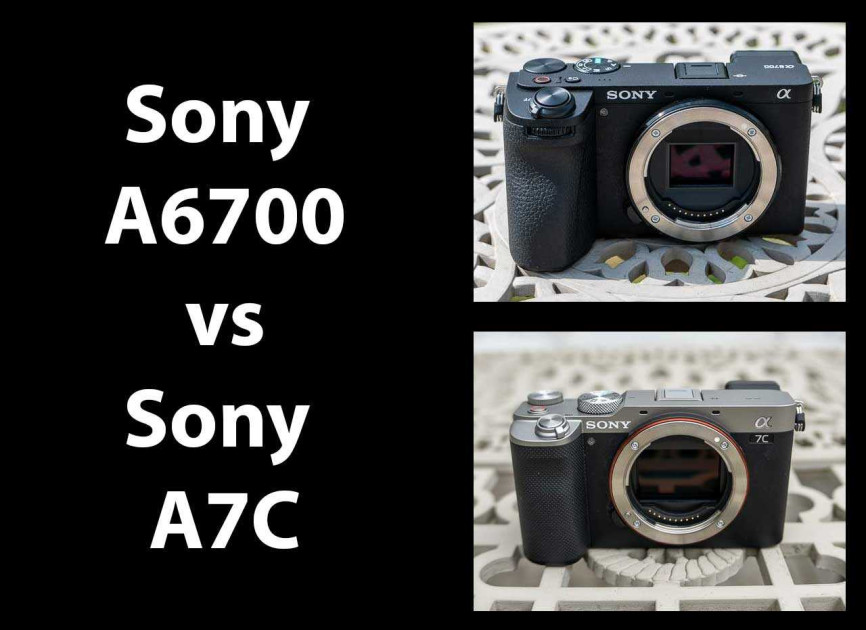[adinserter block=”1″]
The A7C attempts to bridge the gap between Sony’s A6000-series models and their A7-series cameras by squeezing the larger full-frame sensor of the latter into the smaller, lighter body of the former.
Both cameras look very similar at first glance, and with only a few hundred £$ separating the flagship Sony A6700 APS-C model from the entry-level Sony A7C full-frame model, many would-be buyers may be wondering exactly how the two cameras compare with one another, and ultimately which is the “best” one to buy.
So we’re bringing you this in-depth Sony A6700 vs Sony A7C head-to-head comparison to help you choose between the two. It’s certainly not a clear-cut decision…
You can also read our detailed Sony A7C review and Sony A6700 review to find out exactly what we think of each one.
Sensor
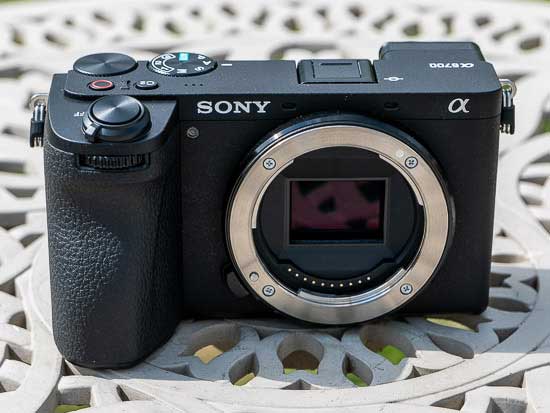
The image sensor is the biggest difference between the A6700 and the A7C, and is the main reason why you should choose one over the other.
The A7C has a 35mm full-frame sensor and the A6700 has an APS-C sensor.
The former sensor is physically larger than the latter by 2.3x, which means that as the number of megapixels is similar for both cameras (24.2mp versus 26.1mp), the image quality from the A7C should theoretically be better.
Both cameras have a BSI (backside illuminated) sensor, though, which is better at collecting light than a normal CMOS sensor, so the difference in image quality will come down to the physically larger pixels of the A7C.
ISO Speed
There’s a slight difference between the two models here in favour of the A7C, with the older camera offering a native ISO range of 100-51,200 and the newer A6700 running from 100-32,000.
The ISO on both cameras can be expanded to ISO 204,800 and both can drop down to ISO 50 if required.
Video
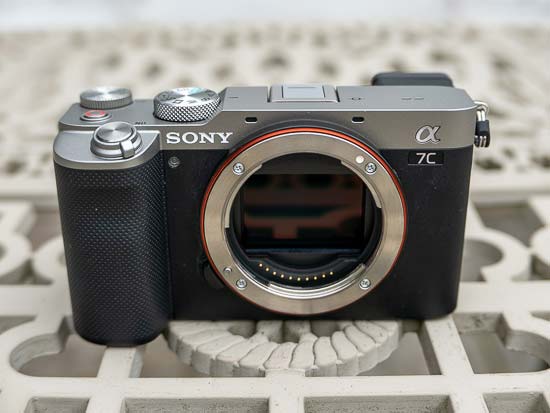
The A6700 offers more advanced video recording specs and performance than the older A7C.
The A7C supports 4K UHD video recording in the XAVC-S format, up to 30fps at 4:2:0 color depth in 8-bit to the inserted memory card or 4:2:2 in 8-bit over HDMI to compatible third party recorders.
It supports the HLG, S-Log3 and S-Log2 profiles and can record Full 1080 HD at up to 120fps, with the dedicated Slow and Quick motion mode offering frame rates ranging from 1fps to 120fps at 1080p quality.
There is no 4K 60p or 10-bit recording on this camera.
The A6700 can capture oversampled 4K from 6K at up to 60p and also 4K/120p with a 1.62x crop. Video can be captured in 10-bit 4:2:2 or 4:2:0 in either H.265 or H.264 AVC files.
The Slow and Quick motion mode offers frame rates ranging from 1fps to 240fps at 1080p quality.
Only the newer A6700 offers the clever Auto Framing feature which uses the camera’s AI-based subject recognition technology to automatically crop the frame to keep the subject in a prominent position when shooting movies, even when the camera is mounted on a tripod.
Both models support the newer Digital Audio Interface (via the Multi Interface Shoe) to enable use of the ECM-B1M digital shotgun microphone.
Autofocus
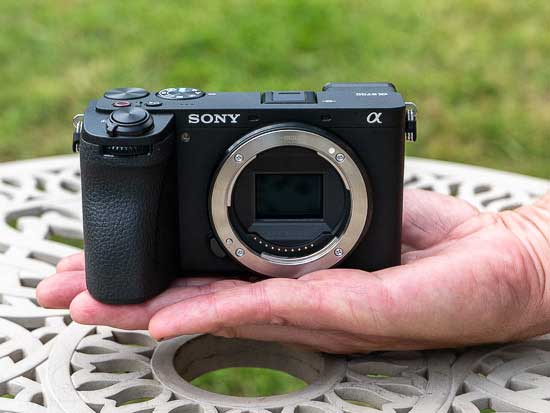
The new A6700 has the same hybrid autofocus system with phase detection and and contrast detections points as the A7C, but with more phase-detection points and, most importantly, greatly expanded subject recognition.
On the A6700 there are 759 phase-detection points and 25 contrast points that cover 93% of the frame, with the system working all the way down to -3EV low-light.
On the A7C there are 693 phase-detection points and 425 contrast detection points that cover 93% of the frame, with the system working all the way down to -4EV low-light.
By far the biggest difference between the two models in terms of their auto-focusing performance is subject recognition.
Sony has added an AI deep learning processing unit to the newer camera which enables it to recognise far more subjects than the previous model, and also greatly improves the detection of humans and animals/birds.
The A7C can only recognise the eye and face of a human, and the eye of an animal.
For the first time on an Sony APS-C sensor camera. the A6700 can recognise a human via its pose as well as its eye and face. So if the person’s head is turned away from the camera, the A6700 will still accurately detect the subject as human based on its AI deep learning.
Animal and bird detection has been expanded from just being able to recognise the eye on the A7C to the eye, head and body on the A6700.
As well as humans and animals, the A6700 also has the ability to recognise airplanes, cars, trains and insects. The A7C cannot recognise any of these subjects.
Burst Shooting
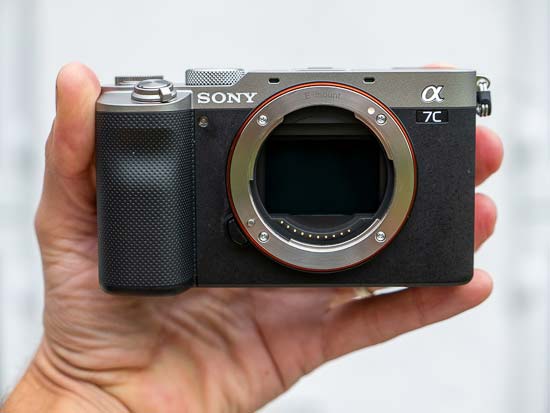
While the A7C offers 10fps burst shooting with Full AF/AE tracking, the A6700 can shoot at a blink and you’ll miss it 11fps.
There is one significant difference between them though that has more of an impact on burst shooting performance – the buffer size.
The Alpha 7C is able to shoot at 10fps for up to 223 JPEGs or 115 compressed RAW images in one high-speed burst.
The A6700 has a much larger buffer than the A7C, at least when it comes to JPEGs, being able to shoot at 11fps for over 1000 Fine JPEGs. It actually has a smaller buffer for RAW files, though, taking 59 RAW images or 44 RAW and JPEGs in one high-speed burst.
The fastest rates on both cameras are available with either the mechanical shutter or the completely silent electronic shutter, which could be the difference between capturing that candid moment or distracting your subject and missing the shot.
Body
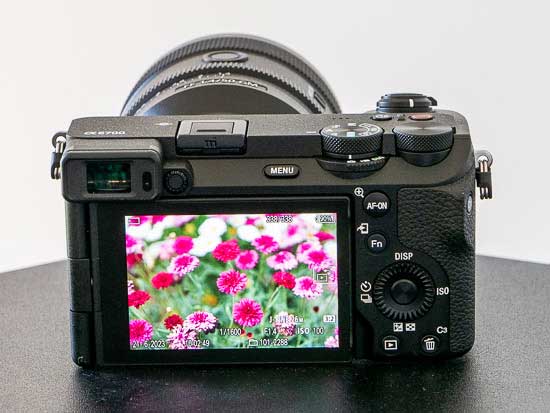
Despite the difference in sensor size, the size, weight and styling of the A7C and the A6700 are very similar.
The new A7C is essentially based on a rangefinder-style A6000-series camera, just slightly bigger and incredibly with a full-frame sensor at its heart rather than a smaller APS-C one.
Somewhat amazingly, the Sony A7C only weighs slightly more than the A6600, whilst being ever so slightly bigger in every dimension.
Both cameras have an EVF that is positioned in the left-hand corner and a simplified interface with fewer controls when compared to the A7-series full-frame cameras.
The A6700 has a larger, more prominent grip than the one on the A7C, which we prefer.
It also has two Custom function buttons, which many people like, on the top-panel. These have effectively been replaced by a dedicated exposure compensation dial on the A7C.
On the rear, the A7C loses another Custom button, whilst the A6700 gains a new C1 custom button which accesses the white balance settings by default.
There is now a second command dial at at the top of the A6700’s handgrip which makes it even easier to change the key exposure settings in conjunction with the rear command dial. Also the handy Still/Movie/S&Q dial from the A7 full-frame series has made its way onto the A6700.The A7C lacks both of these controls.
The much clearer although still lengthy main menu system from the ZV-E1 camera has been included on the A6700 along with a greater number of touch controls including the ability to operate the menu system and swipe up to open the Function menu. These are joined by an array of onscreen touch icons that are specific to the stills and movie modes.
Viewfinder
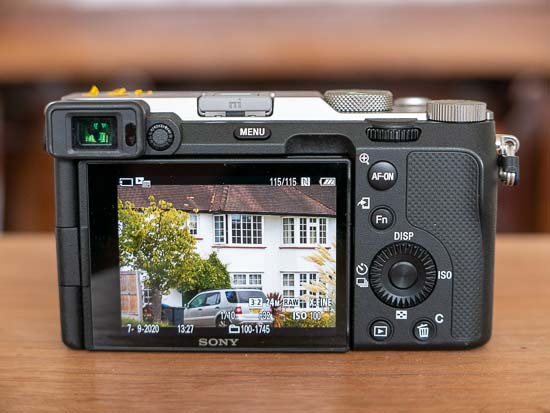
The A6700 has a very similar 0.39″, 2.36million-dot XGA OLED electronic viewfinder to the one used by the A7C.
It features 100% scene coverage and a 120fps high frame rate setting to help track moving subjects more smoothly with virtually no lag.
Crucially, though, it offers a lower magnification of 0.59x, versus 0.70x magnification on the A6700.
The eyepoint is also different – 23mm on the A6700 but only 20mm on the A7C.
LCD Screen
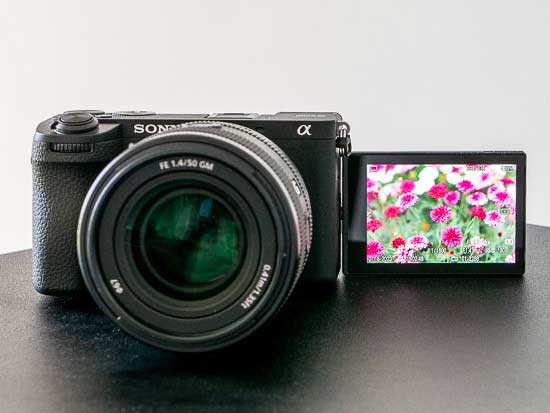
The Alpha 6700 has a slightly higher-resolution 3-inch, 3:2 ratio LCD screen than the A7C – 1.03 million versus 922,000 dots – but we’d have expected to see a much higher resolution screen on a new camera released in 2023.
Both models have a fully articulating vari-angle design which means that you can flip out the screen to the side, rotate it forwards for easier operation when pointing the camera at yourself, and fold it flat against the back of the camera to stop it from getting scratched.
IBIS
Both cameras have 5-axis optical in-body image stabilisation that corrects for pitch and yaw shake, rated for up to 5 stops of compensation.
Sony claim that the A6700 has an updated algorithm that provides more precise control and detection down to the single pixel level, but we’re not sure at this point what material effect that has on the resulting images.
Memory Cards
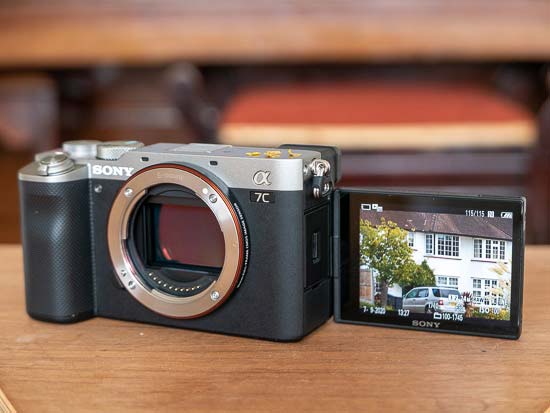
Perhaps unsurprisingly given their compact size, both cameras only have a single memory card slot.
Both support the faster SD UHS-II memory card standard and both have a dedicated memory card port that’s hidden behind a lockable door on the left-hand side of the camera.
Battery Life

The Sony A6700 uses exactly the same large capacity NP-FZ100 battery as the A7C model which offers a CIPA-rated battery life of around 700 shots when using the LCD screen and 750 when using the viewfinder.
Both cameras can also be powered and charged via a USB connection, which is useful if you’re out and about and have a compatible powerbank to plug the camera into, and both use the newer USB-C variant.
Price

A price-tag of £1450 / €1700 body only, £1550 / €1800 with the Sony E PZ 16-50mm F3.5-5.6 OSS kit lens or £1800 / €2100 with the E 18-135mm F3.5-5.6 OSS zoom lens does makes the new Sony A6700 cheaper than the A7C.
In comparison, the A7C is priced at £1900 / $1800 body only or £2150 / $2098 with the FE 28-60mm F4-5.6 kit lens
Conclusion
Choosing between the new Sony A6700 and the slightly older A7C mostly comes down to the sensor size and price, with the A7C being larger in both regards.
There are a few ways in which the A6700 actually outperforms the A7C, though, most notably the outstanding AI-driven subject-detection and the more advanced video specification.
You should also carefully consider the lens range that is available for both cameras. While they share the same E-mount, the number of “FE” full-frame lenses from Sony and third-party manufacturers is much bigger than the range of “E” APS-C lenses, so there’s more choice for the A7C than the A6700.
So what do you think? Would you choose the APS-C Sony A6700 or the full-frame A7C? Leave a comment below!
Your Comments
[adinserter block=”1″]
Credit : Source Post

